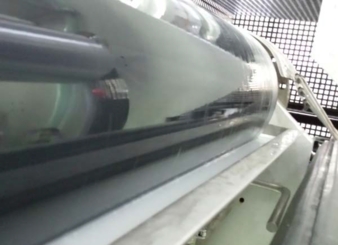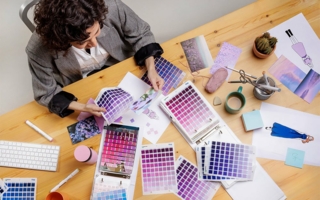22/06/2016 – Verbesserte Gebrauchseigenschaften — auf Deutsch lesen
SMS-nonwovens for protective clothing
The hydrophilic components have been tested with regard to its thermos-physiological as well as its comfort characteristics.
Research goal
The wide scope of protective clothing type 5 / 6 offers great economic potential. In the chemical industry and many other areas, such as woodworking, insulation or installation work, asbestos and remediation of load, mining, food industry, pest control, agriculture and forestry this protective clothing will find widespread applications.
Special task of the project was based on the requirement profile for protection class types 5 and 6 to develop improved SMS materials, which meet performance criteria according to DIN EN 14325. Physical properties such as good air permeability, water vapour permeability and chemical resistance in high quality will be fulfilled. Different nonwoven fabric constructions should be developed for protective clothing, which have improved meltblown layer quality and thus better protection with high wearing comfort. With the use of innovative technologies this protective clothing should not affect the heat balance of the body.
Solution approach
The meltblown components were directly finished with hydrophilic agents during offline trials at STFI. In addition to the finishing by means of melt additive (Irgatec CR 76 A), the targeted SMS structures were finished on both sides during line tests on a hygiene pilot line of REICOFIL. The hydrophilic component was initially implemented into the polymer melt by an additive (Techsurf 15560) or alternatively superficially applied with Kissroll technology (e.g. by Silastol PHP 26). The hydrophobic components such as (Lefasol VO 37/2 and 42/1) were also implemented with Kissroll technology by minimal application system.
Results
The hydrophilic components have been tested with regard to its thermos-physiological as well as its comfort characteristics. Hydrophobic components were specifically tested for water, oil and alcohol resistance as well as chemical resistance. Both components confirmed high quality properties during extensive test series and thus meet the requirements to reach protection classes 5 and 6.
Acknowledgement
The IGF project AiF-Nr. 18057 BR of the research association Forschungskuratorium Textil e. V. was financed by AiF as part of the Industrial Collective Research Programme by the Federal Ministry for Economic Affairs and Energy, based on a decision of the German Bundestag.
The final report can be loaned from STFI.
Contact:
Ralf Taubner Phone: +49 371 5274-262 E-Mail: ralf.taubner@stfi.de
Dipl.-Chem. Wolfgang Schilde Phone: +49 371 5274-155 E-Mail: wolfgang.schilde@stfi.de




